Free Vegetable Garden Layout Plans and Ideas
- January 12, 2024
- 0 comment
Welcome to the world of Free Vegetable Garden Layout Plans and Ideas, where we take the guesswork out of growing your own veggies. Whether you’re a seasoned gardener or just starting out, these practical layouts are designed to make your gardening journey a breeze. Imagine a backyard filled with neatly organized rows of vegetables, each plot strategically placed to make the most of your space.
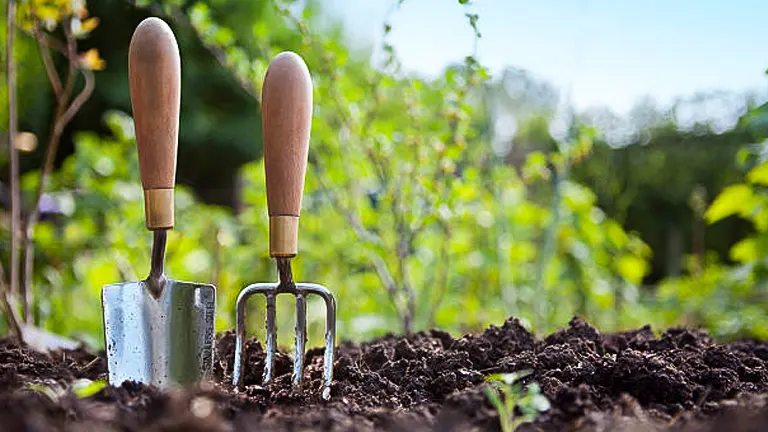
In this guide, we’ll explore simple and effective layouts, planting tips, and space-saving tricks to help you create a thriving vegetable garden. Let’s dive in and make your gardening experience both enjoyable and fruitful!
List of Free Vegetable Garden Layout Plans and Ideas
- Square-Foot Gardening Layouts
- Backyard Garden Layouts
- Raised Bed Garden Layouts
- Kitchen Garden Layouts
- Homestead Garden Layouts
- Small Gardens
- Dry Gardens or Drought-Resistant Gardens
- Flower Garden
- Companion Planting Garden
- Partial-Shade Gardens
1. Square-Foot Gardening Layouts
Square-Foot Gardening (SFG) emerges as a space-efficient and beginner-friendly approach to cultivating your own veggies. Developed in the 1970s by American author and TV presenter Mel Bartholomew, this method utilizes raised beds divided into 4×4-foot squares, eliminating traditional rows and minimizing maintenance efforts.

Typically, SFG beds are at least 4×4 feet, although variations like 2×2 or 4×12 feet exist. The lattice placed on top visually separates the crops, allowing for dense planting and easy management. The simplicity of this method lies in the absence of complex plant spacings; each square hosts 1, 4, 9, or 16 plants, depending on their size. Larger plants that span two squares, like climbing peas and beans, are exceptions.
The depth of SFG beds is crucial, ranging from 6 to 12 inches, providing ample space for rich nutrients while maintaining good drainage. The recommended soil mix, known as “Mel’s Mix,” ensures weed-free and nutrient-rich conditions. Interestingly, Bartholomew’s innovative approach includes a prohibition on walking on the soil in the bed to prevent soil compaction—a revolutionary idea at the time.
Pros and Cons:
Pros:
- Ease and Simplicity: Ideal for beginners, SFG offers unparalleled ease and simplicity in planning and maintenance.
- Space Efficiency: SFG maximizes space utilization, making it suitable for small gardens or limited spaces.
- Adaptability: The method can be adapted for the elderly, disabled, or school gardens, offering accessibility benefits.
Cons:
- Limitations on Plant Types: Struggles with accommodating larger plants like squash and melons.
- Environmental Concerns: The original recommended soil mix raised environmental concerns, leading to the exploration of more sustainable alternatives.
- Setup Costs: The specific soil mix and raised beds may be pricier compared to alternative methods.
Despite these drawbacks, SFG remains a valuable part of gardening. Its success in reducing maintenance time and increasing yields, especially in limited spaces, makes it an attractive choice. However, its limitations often prompt gardeners to explore other techniques beyond the SFG framework, showcasing the adaptability and continuous evolution of gardening practices.
Additional Tips:
- Succession Planting: Plan for successive plantings to ensure a continuous harvest throughout the growing season.
- Vertical Gardening: Incorporate trellises or cages for climbing plants, maximizing vertical space.
- Companion Planting: Choose companion plants strategically to enhance growth and repel pests naturally.
- Soil Health: Regularly replenish soil nutrients by adding compost and organic matter.
- Crop Rotation: Rotate crops annually to prevent soil-borne diseases and optimize soil fertility.
Square-Foot Gardening is not just about simplicity; these extra tips can elevate your gardening game for a more productive and enjoyable experience.
Does Square-Foot Gardening Work?
Yes, SFG is effective, particularly for those with limited time and space. It minimizes weeding efforts, accelerates soil warming for early planting, and suits beginners. However, its limitations in accommodating certain plants highlight the importance of considering alternative methods based on specific gardening goals and preferences. Square-Foot Gardening remains a solid foundation, but as the saying goes, it’s just one tool in the gardening toolbox, and there’s a diverse array of techniques to explore on your journey to growing your own food.
2. Backyard Garden Layouts
In a busy backyard where the family chills, having a smart layout is important. Backyard gardens can be simple, like regular rows or raised beds.
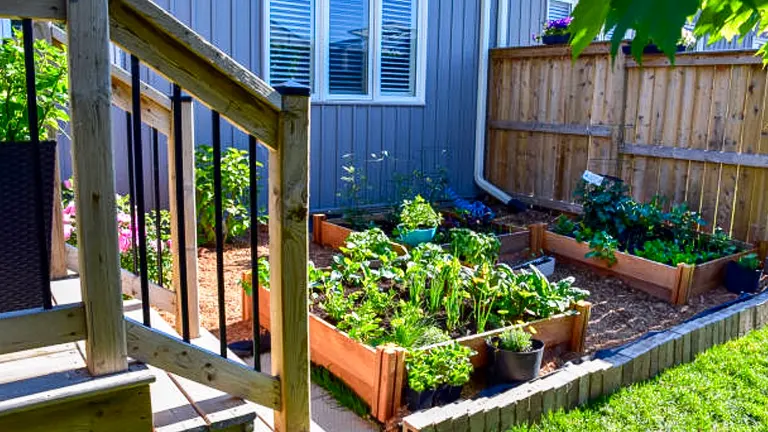
Your backyard is more than just a plant spot—it’s for chilling, family time, and fun. But how do you keep your plants safe from playful pets or impromptu football games? Here are some easy backyard garden ideas:
- Different Spaces: Create different areas for various activities, whether it’s using rows or raised beds. Simple paths or low edges protect your plants and help family members and pets stay in their designated areas.
- Edible Gardens: Set aside a specific spot for growing veggies and herbs. Whether in rows or raised beds, this dedicated area ensures your garden stays untouched during family activities, making it easier to maintain and enjoy harvests.
- Protective Measures: For a lively family backyard, add some safeguards. Low edges made of wood or wicker act as a barrier against accidental trampling or energetic play, providing safety and a touch of style.
- Backyard Dynamics: Your backyard, the heart of family fun, needs a mix of relaxation, play, and gardening. Here are some simple backyard garden ideas to inspire a functional and beautiful space!
A backyard serves various roles—recreation, relaxation, alfresco dining, a play area for children and pets, and a space for growing fruits, vegetables, and flowers. To address these diverse needs, consider layouts that maintain harmony while protecting plants from potential hazards like trampling, stray footballs, or boisterous dogs.
Pros and Cons:
Pros:
- Versatility: Backyard layouts adapt to various preferences and family activities.
- Aesthetics: Simple designs enhance the overall beauty of your backyard.
- Integration: Well-planned layouts effortlessly blend gardening into family life.
Cons:
- Space Limits: Small yards might find it tricky to balance different garden elements.
- Maintenance Challenges: Keeping up with the dynamic backyard environment can be a task.
- Protective Measures: Adding safeguards may need a bit more effort and materials.
Crafting a backyard garden is about creating a functional and charming extension of your home. These straightforward layouts ensure your garden thrives amidst family activities, striking the perfect balance.
3. Raised Bed Garden Layouts
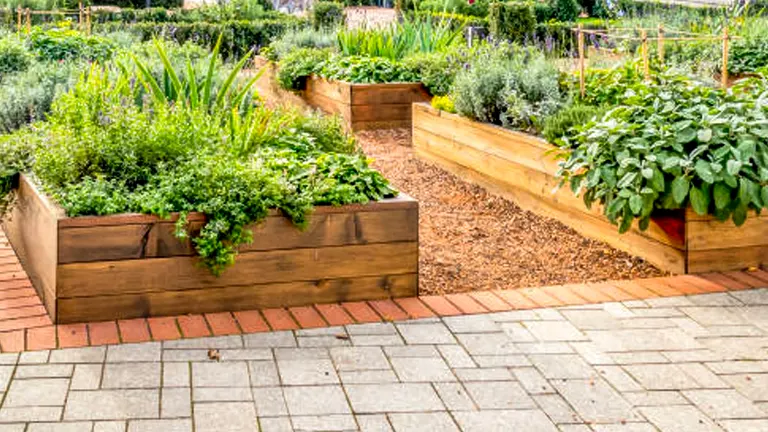
Raised bed gardens keep it easy and efficient. These beds, often made with wood or other stuff, are a straightforward way to grow plants. Fill them with good soil and compost, and you’re set for healthy plant growth.
What Are Raised Beds?
At its core, raised bed gardening involves creating mounds directly on the ground, often framed for a neat finish. These beds are filled with a mix of high-quality soil, compost, and/or leaf mold, addressing challenges like stony, compacted, or nutrient-poor soils. They drain well and are even suitable for hard surfaces. By attaching hoops to the edges, you can easily add netting or shade cloth for additional crop protection.
Ideal Size of Raised Beds: For home vegetable gardens, narrow beds up to four feet wide are recommended. This allows easy access to the center without disturbing the soil structure. Raised beds are particularly helpful for gardeners with limited mobility, as they reduce the need to bend and can be adapted for wheelchair access by building them on raised platforms.
Pros and Cons:
Pros:
- Versatile: Raised beds adapt to challenging soil conditions.
- Accessibility: Ideal for gardeners with limited mobility or wheelchair users.
- Drainage: Excellent drainage helps prevent waterlogging and root diseases.
Cons:
- Cost: Setting up raised beds can be more expensive compared to other methods.
- Space Limitations: Larger plants may struggle in confined raised spaces.
- Environmental Concerns: Materials like wood may raise sustainability issues.
Raised bed garden layouts provide a practical and space-efficient solution, offering adaptability and ease of access. While there are some drawbacks, the benefits of improved drainage and accessibility make them a popular choice for many gardener
Additional Tips:
- Defined Zones: Clearly delineate areas for different activities, ensuring harmony in functionality.
- Low-Level Edging: Implement protective low edging, such as wood or wicker, to safeguard plants from potential disturbances.
- Container Gardening: Explore container options for flexibility in placement and design, ideal for small spaces.
- Seasonal Decor: Integrate seasonal flowers or decorative elements to add visual interest and variety.
- Child-Friendly Design: Ensure the layout is safe for children, with rounded edges and space for play.
Creating a harmonious backyard garden involves thoughtful planning and integration. These extra tips aim to enhance functionality and beauty, ensuring your backyard remains a picturesque and functional extension of your home.
4. Kitchen Garden Layouts
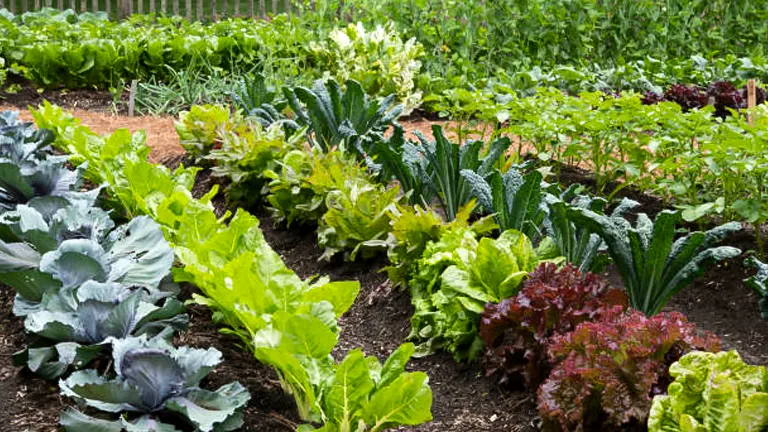
Kitchen gardens are all about keeping things fresh and convenient. Imagine having your herbs and veggies right outside your kitchen door it’s the essence of a kitchen garden. This living artwork combines vegetables, fruits, herbs, and flowers, ensuring a constant supply of fresh kitchen essentials.
What Are Kitchen Gardens?
A kitchen garden not only provides fresh veggies but also adds a touch of visual appeal. Learn how to plan one, whether it’s a classic row layout or a potager garden, where different plants coexist in harmony. The idea is to create a beautiful vegetable garden that rivals the aesthetics of flower beds.
Pros and Cons:
Pros:
- Fresh Harvest: Enjoy a continuous supply of fresh vegetables and herbs.
- Aesthetic Appeal: Well-designed kitchen gardens enhance the overall look of your space.
- Versatility: Choose between traditional row layouts and more creative potager gardens.
- Natural Pest Control: Companion planting attracts beneficial insects for a balanced ecosystem.
Cons:
- Maintenance: Continuous replanting may require regular effort.
- Learning Curve: Planning a visually appealing kitchen garden might demand some knowledge.
- Space Consideration: Larger kitchen gardens could need more space.
Additional Tips:
- Companion Planting: Pair plants strategically to naturally deter pests and promote growth.
- Seasonal Rotation: Plan for seasonal variations, rotating crops to optimize soil health.
- Container Options: Explore container gardening for flexibility in placement and design.
- Vertical Gardening: Utilize vertical space with trellises or hanging containers for vining plants.
- Watering Schedule: Establish a consistent watering routine, especially during hot spells.
A kitchen garden isn’t just about the harvest; it’s about creating a sustainable and visually pleasing space right outside your kitchen door.
5. Homestead Garden Layout

Homestead gardens go beyond the ordinary, emphasizing sustainability and self-sufficiency on a larger scale. These gardens, usually more extensive, aim for independence or surplus produce for trading. Traditional in-ground rows are common, and features like chicken coops align with the broader homesteading principles.
What are Homestead Garden?
A homestead garden represents a commitment to self-sufficiency and sustainable living on a larger scale, rooted in the historical Homesteading Act of 1862. Characterized by traditional in-ground rows, diverse crops, and often including elements like chicken coops, these gardens foster independence, though they may require significant space and initial investment. Embracing a range of skills, from growing food to animal husbandry, homesteading reflects a holistic approach to sustainable living, offering abundance and trade potential.
Homestead Garden Characteristics:
- Varied in size, generally larger to sustain independent living.
- Embraces traditional in-ground rows for versatile crop cultivation.
- May incorporate raised beds, particularly closer to the living quarters.
Pros and Cons:
Pros:
- Self-Sufficiency: Supports a self-sufficient lifestyle through diverse crop cultivation.
- Abundance: Traditional rows facilitate the growth of a wide variety of high-yield crops.
- Versatility: Suitable for growing various vegetables, fruits, and herbs.
- Flexibility: Raised beds offer adaptability for specific crops or easier accessibility.
- Trade Potential: Surplus produce can be traded, bartered, or sold.
Cons:
- Learning Curve: Managing a homestead garden may pose challenges, especially for beginners.
- Space Requirements: Larger size demands considerable space, limiting feasibility in compact areas.
- Maintenance Effort: The scale of a homestead garden may require more time and effort for upkeep.
- Initial Investment: Establishing a homestead garden, with raised beds and additional features, might involve an initial investment.
Additional Tips:
- Enhance biodiversity and natural pest control by integrating chicken coops or beehives.
- Designate specific areas or greenhouses for raising seedlings, ensuring continuous planting for year-round productivity.
- Consider starting small and gradually expanding to effectively manage the learning curve.
6. Small Gardens
In small gardens, it’s all about using space wisely for a bountiful harvest. These gardens are designed for limited areas, focusing on growing crops you love and those that make economic sense. Planning strategically helps avoid wasted space and ensures you get the best possible yield.

Designing a small vegetable garden requires meticulous thought to minimize wasted space and achieve a fruitful harvest. Employ inter-cropping techniques, planting smaller, quick-growing plants alongside larger, slower ones, and plan for succession planting to ensure continuous productivity.
What are Small Gardens?
Small gardens are compact spaces that demand strategic planning to optimize their efficiency. Whether cultivated for personal enjoyment or cost-effective harvesting, these gardens prioritize crops based on preferences and market value. Designing a small vegetable garden requires meticulous consideration to minimize wasted space and ensure a productive yield. Inter-cropping techniques and succession planting play key roles in maximizing the use of limited areas. While small gardens facilitate easy weed control and offer aesthetic appeal by incorporating flowers, they may present challenges such as limited crop variety and potential space constraints. Despite these considerations, small-scale gardening provides a manageable and visually pleasing option for those looking to make the most of confined spaces.
Pros and Cons:
Pros:
- Easy weed control: Managing weeds in a small garden is more manageable, contributing to a tidy and well-maintained space.
- Aesthetic appeal: Small gardens offer an opportunity for careful design, enhancing the visual appeal of the area.
- Beneficial insects: Incorporating flowers attracts helpful insects, contributing to natural pest control.
Cons:
- Limited Crop Variety: The confined space may restrict the types of crops you can grow compared to larger gardens.
- Potential Space Constraints: Some crops may require more space to thrive, limiting the selection of plants you can include in your small garden.
Additional Tips:
- Vertical Gardening: Utilize vertical space by growing plants on trellises, walls, or hanging containers to maximize growing area.
- Container Gardening: Opt for containers to allow flexibility in placement and the ability to move plants around as needed.
- Succession Planting: Plan for successive planting to ensure a continuous harvest, making the most of the limited space.
- Companion Planting: Pair compatible plants to optimize space usage and provide natural pest control.
- Compact Varieties: Choose compact or dwarf varieties of plants to maximize yield in confined spaces.
Small-scale gardening offers an array of benefits, from ease of maintenance to the opportunity to create a visually appealing and productive space. However, it’s crucial to consider potential limitations in terms of crop variety and space constraints when planning your small garden.
7. Dry Gardens or Drought-Resistant Gardens
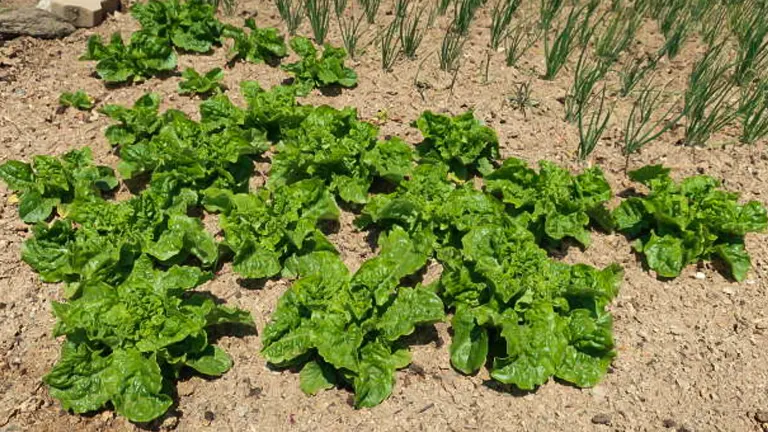
Dry Gardens or Drought-Resistant Gardens are designed for regions prone to drought or desert climates. These gardens employ strategic approaches to create visually appealing and water-efficient landscapes. Overcoming challenges of limited water availability, resourceful gardeners can cultivate thriving gardens. After the seedling stage, vegetables and fruits typically need about 1 inch of rain per week, and additional watering in free-draining soil can enhance growth. Timer-operated drip irrigation proves highly efficient, delivering precise water amounts and minimizing evaporation and runoff. Applying organic mulch during high temperatures further conserves water, reducing evaporation and assisting plants in retaining essential moisture.
Pros and Cons:
Pros:
- Water Efficiency: Dry gardens prioritize water conservation through methods like drip irrigation, maximizing efficiency.
- Sustainable Landscapes: Resourceful gardening in drought-prone areas promotes sustainability and resilience.
- Precise Watering: Timer-operated drip irrigation delivers water precisely, minimizing waste and supporting plant health.
Cons:
- Initial Setup: Installing drip irrigation systems may require an initial investment and effort.
- Plant Selection: Some plants may be limited in a dry garden, requiring careful selection for optimal adaptation.
Additional Tips:
- Choose Drought-Tolerant Plants: Opt for plants that thrive in arid conditions, such as succulents and lavender.
- Strategic Mulching: Apply organic mulch around plants to conserve soil moisture and regulate temperature.
- Group by Water Needs: Plan your garden layout by grouping plants with similar water requirements.
- Efficient Watering: Water during cooler times, like early morning or late evening, and adjust based on weather conditions.
- Rainwater Harvesting: Consider collecting rainwater for later use during dry periods.
- Shade Considerations: Provide shade using structures or trees to reduce direct sunlight and limit evaporation.
8. Flower Garden
In a Flower Garden, the focus is on creating a vibrant and enduring display of perennial blooms that not only beautify landscapes but also elevate our well-being. Almanac readers share five inspiring flower garden layouts, demonstrating the joy and charm flowers bring to our lives. Beyond their ornamental appeal, flower gardens play a vital role in enhancing pollination for fruit and vegetable crops, fostering a harmonious ecosystem.
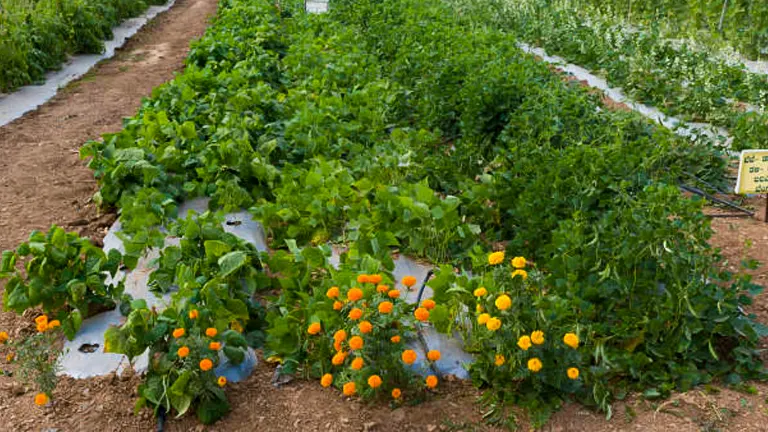
Choosing flowers like calendula, marigolds, and zinnias attracts beneficial insects that naturally control pests, promoting a healthy garden environment. When planning a perennial flower bed or border, strategic arrangement, with taller plants at the back, small edging plants at the front, and mid-sized flowers in between, ensures a continuous burst of colors throughout the season.
Pros and Cons:
Pros:
- Enhances aesthetic appeal with vibrant and diverse blooms.
- Boosts well-being and brings joy with a variety of colorful flowers.
- Supports pollination, benefiting fruit and vegetable crops.
- Can be created on a budget, offering an affordable gardening option.
Cons:
- Requires regular maintenance for optimal bloom and appearance.
- Seasonal planning is necessary to ensure continuous flowering.
- Some gardeners may find it challenging to select and care for specific flower varieties.
Additional Tips:
- Pest-Repellent Plants: Include flowers with natural pest-repelling properties, such as lavender or chrysanthemums, to minimize the need for chemical pesticides.
- Seasonal Variety: Introduce seasonal flowers to bring changing colors and textures to your garden, providing year-round interest.
- Wildflower Mix: Consider planting a wildflower mix to create a more natural and low-maintenance garden, attracting a diverse range of pollinators.
- Container Gardening: If space is limited, explore container gardening with vibrant potted flowers, offering flexibility in garden design.
- Fertilize Mindfully: Use organic fertilizers sparingly to avoid overstimulating growth or causing nutrient imbalances. Follow recommended application rates.
These tips aim to enhance the beauty and sustainability of your flower garden without overwhelming complexity.
9. Companion Planting Garden
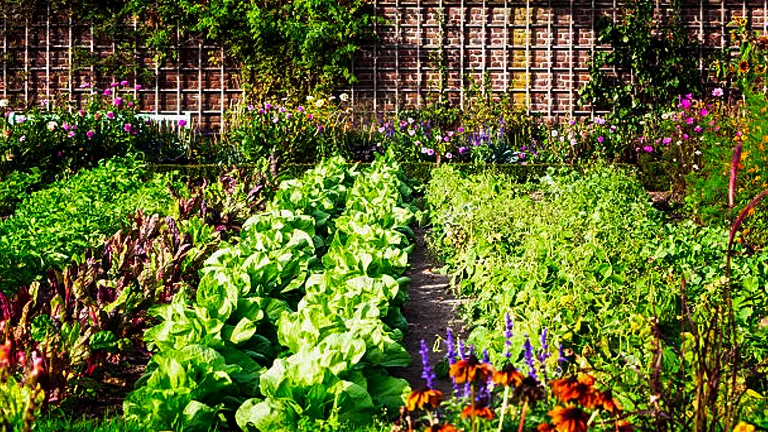
Companion planting introduces a collaborative approach to gardening, where certain plants are strategically grown together to foster mutual benefits, such as pest protection and improved growth. This technique taps into the natural properties of specific plants to create a harmonious garden ecosystem. Basil, for example, acts as a companion to tomatoes, helping repel pests like whiteflies and mosquitoes. Sage serves as a useful herb, deterring carrot flies and cabbage moths. The practice extends to larger vegetables providing support and protection to smaller plants, contributing to a well-balanced and sustainable garden.
Pros and Cons:
Pros:
- Natural Pest Control: Leverages plant properties to repel pests organically.
- Enhanced Growth: Facilitates improved growth and protection through strategic plant pairings.
- Biodiversity: Promotes a diverse and balanced garden ecosystem.
Cons:
- Research Requirement: Effectiveness depends on understanding the compatibility of different plant species.
- Trial and Error: Success may vary, requiring experimentation to find optimal combinations.
- Space Consideration: Planning for companion planting necessitates thoughtful spacing and arrangement in the garden layout.
Additional Tips:
- Rotate Crops Annually: To prevent soil-borne diseases and pests, rotate the placement of crops each growing season.
- Utilize Beneficial Flowers: Integrate flowers like marigolds and calendula, known for attracting beneficial insects that aid in pest control.
- Diversify Companion Plants: Mix various companion plants to create a balanced and resilient garden environment.
- Consider Plant Height: When planning, factor in the eventual height of plants to avoid shading shorter ones or hindering their growth.
- Observe and Learn: Regularly observe your garden to understand the interactions between different plants and make adjustments based on your observations.
10. Partial-Shade Gardens
If your garden lacks abundant sunlight, a partial-shade garden is a viable solution for cultivating fresh greens and vegetables. While most crops thrive in full sun, certain vegetables tolerate partial sun or shade, making it possible to enjoy a fruitful harvest despite limited sunlight hours. Understanding your garden’s light levels, from full sun to deep shade, is crucial for effective planning. Cole crops like broccoli and root vegetables such as radishes adapt well to partial shade, though they might take longer to mature. Leafy greens, climbing vegetables, and perennial plants can also flourish with minimal sunlight.

However, careful consideration is needed to choose vegetables that are less prone to bolting in hotter climates. Utilizing the sunniest areas for seed starting and employing reflective surfaces to redirect light can enhance your garden’s productivity.
Pros and Cons:
Pros:
- Enables gardening in areas with less sunlight.
- Offers a variety of shade-tolerant vegetables like cole crops, root vegetables, and leafy greens.
- Allows for the cultivation of climbing vegetables and perennial plants.
- Utilizes reflective surfaces to optimize available sunlight.
- Reduces water evaporation, requiring less frequent watering.
Cons:
- Slower growth and maturation compared to full-sun gardens.
- Limited choices for certain heat-sensitive crops.
- Potential competition for water and nutrients with nearby trees.
- Requires careful selection of vegetables to avoid bolting in hotter climates.
- May need additional measures like cold frames to extend the growing season.
Additional Tips:
- Select Shade-Tolerant Varieties: Choose vegetable and plant varieties specifically bred for partial shade conditions. These varieties are better equipped to thrive with less sunlight.
- Use Raised Beds: Raised beds provide better drainage and can warm up faster in the spring, giving your plants a head start. They also make it easier to control the soil quality.
- Implement Vertical Gardening: Make the most of available sunlight by incorporating vertical gardening techniques. Growing certain plants vertically not only maximizes space but also exposes them to more sunlight.
- Monitor Light Levels: Regularly assess the changing light levels in your garden throughout the day and across seasons. Adjust plant placement accordingly to ensure they receive optimal sunlight.
- Apply Mulch: Mulching helps retain soil moisture and regulates temperature. Use organic mulch to suppress weeds and conserve water, creating a more favorable environment for shade-tolerant plants.
- Consider Shade-Loving Flowers: Integrate shade-loving flowers into your garden to enhance aesthetics and attract beneficial insects. Flowers like impatiens, begonias, and hostas thrive in partial shade.
- Rotate Crops: Practice crop rotation to maintain soil health and prevent the buildup of pests and diseases. Moving plants around can also expose them to different light conditions.
- Install Shade Cloth: For areas with intense afternoon sun, consider using shade cloth to protect plants from excessive heat. This allows you to control the amount of sunlight reaching your crops.
- Water Wisely: Be mindful of watering needs. While you may not need to water as frequently in partial shade, ensure that your plants receive adequate moisture, especially during dry periods.
- Experiment with Container Gardening: If your garden space is limited, try container gardening. This allows you to move plants to sunnier spots as needed and adds flexibility to your gardening layout.
These tips can enhance your partial-shade gardening experience and help you make the most of your garden space.
Factors to Consider When Creating Vegetable Garden Layout Plans and Ideas
- Sunlight Exposure: When planning your vegetable garden layout, assess the sunlight exposure in different areas of your garden. Most vegetables require ample sunlight, so identify spots with full sun, partial shade, or shade. Consider the orientation of your garden and the shadows cast by nearby structures or trees.
- Soil Quality and Composition: The health of your soil significantly impacts plant growth. Conduct a soil test to determine its pH, nutrient levels, and composition. Amend the soil with organic matter to improve fertility and structure. Different vegetables have varying soil requirements, so tailor your soil preparation accordingly.
- Spacing and Planting Density: Proper spacing between plants is crucial for healthy growth. Consider the mature size of each vegetable and provide adequate space to prevent overcrowding, which can lead to poor air circulation and increased risk of diseases. Planting density also affects how efficiently you can utilize your garden space.
- Companion Planting: Embrace companion planting principles to enhance the overall health of your vegetable garden. Some plants have mutually beneficial relationships, such as deterring pests or improving soil fertility. Integrate companion plants strategically to create a balanced and thriving ecosystem within your garden.
- Crop Rotation: Prevent soil-borne diseases and maintain soil fertility by practicing crop rotation. Avoid planting the same family of vegetables in the same location year after year. Rotating crops helps break disease cycles and ensures that the soil remains nutrient-rich for different types of plants.
- Watering System: Consider your watering system and ensure that it provides consistent moisture to your plants. Different vegetables have varying water requirements, so design your garden layout with access to water sources in mind. Drip irrigation and soaker hoses can be efficient options to minimize water wastage.
- Garden Accessibility: Plan for easy access to your vegetable garden. Create paths or walkways between garden beds to facilitate maintenance tasks, harvesting, and weeding. Accessibility is especially important if you have raised beds or multiple garden areas.
- Seasonal Considerations: Recognize the seasonal variations in your climate. Choose vegetables that are well-suited to your growing zone and plan for successional planting to extend your harvest throughout the seasons. Understanding your local climate ensures that your garden remains productive year-round.
- Aesthetics and Design: While functionality is key, don’t overlook the aesthetic aspect of your vegetable garden. Arrange plants in an appealing and organized manner. Consider color combinations, plant heights, and overall garden design to create an inviting and visually pleasing space.
- Pest and Disease Management: Implement strategies for pest and disease management in your garden plan. This may include selecting disease-resistant varieties, using natural pest deterrents, and staying vigilant for early signs of issues. A proactive approach can help minimize the impact of pests and diseases on your crops.
Remember, successful vegetable garden layout plans involve a thoughtful combination of these factors to create a productive, healthy, and enjoyable gardening space.
Conclusion
In the realm of free vegetable garden layout plans and ideas, a world of possibilities awaits both novice and seasoned gardeners. From space-efficient square-foot gardening to charming backyard layouts and sustainable kitchen gardens, these free plans offer a diverse palette for creating thriving, aesthetically pleasing spaces. Thoughtful considerations like sunlight, soil quality, and companion planting underscore the importance of strategic planning. With these layouts, you have the tools to transform your outdoor space into a bountiful, sustainable haven. Embrace the wealth of options and let your gardening journey flourish with innovation, beauty, and the joy of homegrown produce.
FAQs
- What is the key benefit of utilizing free vegetable garden layout plans?
Free vegetable garden layout plans provide a structured and strategic approach to optimize space, sunlight, and resources, enhancing the efficiency and productivity of your garden. - Are these plans suitable for beginners in gardening?
Absolutely! Many free vegetable garden layout plans are designed with simplicity in mind, making them ideal for beginners. They often include user-friendly guides and tips to support those new to gardening. - Can these layouts be adapted for small spaces or urban environments?
Yes, indeed. Several free garden plans cater specifically to small spaces, offering innovative solutions like vertical gardening and container gardening, making them perfect for urban dwellers or those with limited space. - How important is sunlight in these garden layouts?
Sunlight is a crucial factor. Most plans emphasize the importance of assessing sunlight levels for different crops. They guide users to strategically place plants based on their sunlight requirements for optimal growth. - Do these plans consider sustainable and organic gardening practices?
Absolutely. Many free vegetable garden layouts incorporate sustainable practices, including companion planting, organic soil management, and eco-friendly pest control methods, promoting a harmonious and eco-conscious gardening approach. - Can I customize these plans based on my plant preferences?
Yes, most free garden layouts are flexible and allow customization based on personal preferences. Gardeners can choose plants they enjoy and that align with their culinary or aesthetic preferences. - How do these layouts address challenges like pests and diseases?
Many plans provide insights into companion planting, where certain plants naturally deter pests. Additionally, they may offer guidance on organic pest control methods, promoting a holistic and chemical-free gardening approach. - Are there ongoing communities or forums related to these free garden plans for support and advice?
Indeed, many gardening communities and forums exist where enthusiasts share experiences, tips, and advice related to the specific free vegetable garden layout plans. These communities can be valuable resources for additional guidance and support.
As you embark on your gardening journey, let these free vegetable garden layout plans and ideas be your creative companions. From square-foot gardening to lush flower beds, each layout offers a unique way to nurture your green space. Tailor them to your needs, experiment, and most importantly, enjoy the rewarding experience of cultivating your own slice of nature at home. Happy gardening!

Benjamin Brooks
Forestry AuthorGreetings! I'm Benjamin Brooks, and my journey over the past 15 years has revolved around the fascinating realms of content creation, expertise in snow clearing, and the intricate world of lumberjacking and landscaping. What began as a simple curiosity about the natural world and heavy machinery has evolved into a passionate profession where my love for crafting words intertwines seamlessly with my lumberjacking and garden skills.




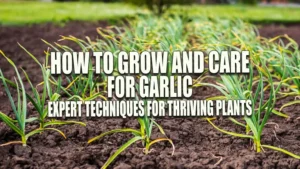








Leave your comment